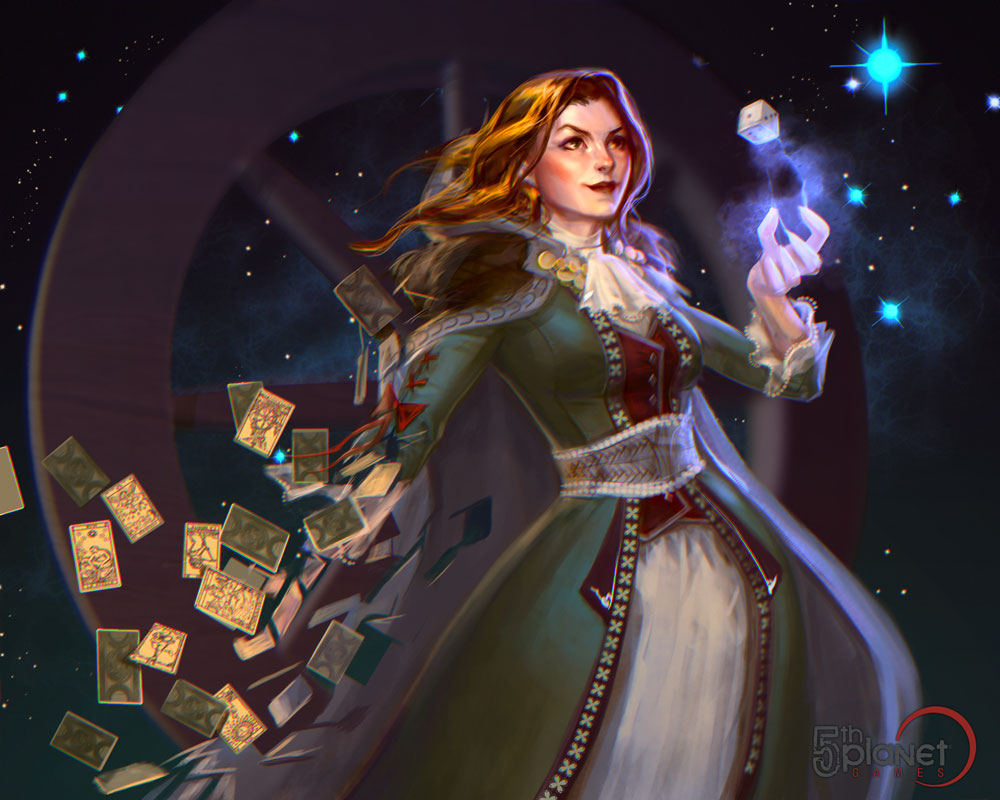Gambits
Fool me once... shame on you, fool me twice... I'm impressed.
A Gambit is a game played among rogues and bards as well as those who practice Arcana Discordia. There are many examples of Gambit but no matter what game you are playing it is all a variation on the same concept.
A gambit is a test of wits and skill often bearing the illusion of a game of chance. Two or more people will have a wager.
They wager any amount of money that the other players cannot determine how a trick is done, beat them in a game of chance, or solve a riddle. The players will try to cheat and win while trying to catch the others doing the same. If you can catch a player in the act, that player loses and must wait until the next round to play again.
Rules
When the first gambits emerged, they did so with a set of standards that are followed to the letter. This is often due to good faith and fear of developing a bad reputation with peers.- No Magic: Unless agreed upon by all players, no one may use magic during the game.
- Transparency: Rules of specific gambits as well as the conditions of winning and losing must be made clear. Loopholes and technicalities are not allowed.
- Honesty: it is expected to be upfront about whether you have been found out by another player.
- Forms: gambits can be demonstrations such as illusions, competitive games involving cards or dice, or riddles, puzzles, and word games. Regardless of the gambit it should be made clear what form it takes.
The Oldest Trick in the Book
Three card switch The three card switch, or Three Card Monte is a wager involving 3 cards. The cards are diplayed flipped face down, and then are rearranged using a series of motions intended to confuse the observer. The observer must then pick where a previously chosen card ended up. Several variations on the game exist and some are much harder than others. One version uses a marble or seed instead of cards. The seed is placed under a cup with two cups on either side. The cups are rearranged and the observer must find the marble. This allows more complex sleight of hand to be used. If the observer can identify where the marble of chosen card is, even if its in the performers pocket, or identify what the performer did to cheat, the observer wins the wagerA Good Eye
The ethics of those who play these gambits usually restricts them to playing only with those who know what they are. Swindling the ignorant it's not the primary goal of the game but rather to better one's ability to spot trickery, and better ones ability to practice trickery themselves. For this reason there have been several methods used to identify those who are able to play the game and to induct those who wish to learn how.Thieves cant
Thieves cant is a language created by thieves and adapted by the bards in the College of tricksters. It is a complex set of symbols, word combinations, hand signals, and even made up code words that one can use to communicate with and identify each other. Some times it as simple as a symbol on a market stall or a tavern bar. Other times it can be more exotic, like a combined language that takes words from several other languages to create an in depth lexicon.Remember, the first performance is a trick. The second is a lesson.
Origins
Gambits teach others how to avoid being swindled by con artist. The bard named The Trickster dedicated his life to studying the ways of criminals and how they take advantage of others.He built The College of Tricksters after studying under numerous criminal organizations and learning their many tricks of social engineering and misdirection. The concept of a gambit came about soon after the establishment of the college.
The college needed an effective way to spread information without making it obvious for others who would likely attempt to silence such a radical display of their secrets. The concept of a gambit is more than just making money by knowing more than your competition. It is also a method of getting to the point where you do know more than your competition.
This playful way of exchanging information as opposed to Simply teaching it at the college led many criminal organizations astray for some time.
A turn of events...
Nowadays, members of The Doves of Black and White and other criminal organizations frequent the college not to suppress, but to learn what even they couldn't teach one another. They learn the many tricks that they can use to improve their criminal craft. The tricksters welcome this exchange of information as they usually bring new skills themselves that can be given to the college in exchange.Remove these ads. Join the Worldbuilders Guild


Comments
Author's Notes
So Thieves Cant, Three Card Monte, and Petals Around The Rose are all real and have been around a very long time. You probably recognise one or two. You could easily google different ways the games are played or even google the solutions to petals... but that'd be cheating....>:) see if you can figure it out. Kudos if you can.
Obviously gambits are inspired by magic tricks, cadistry, and games like poker. Those who play have a very different way of handling the exchange of information. Instead of hoarding their secrets, they willingly exchange them for money or a stiff drink, as they likely have many to sell.